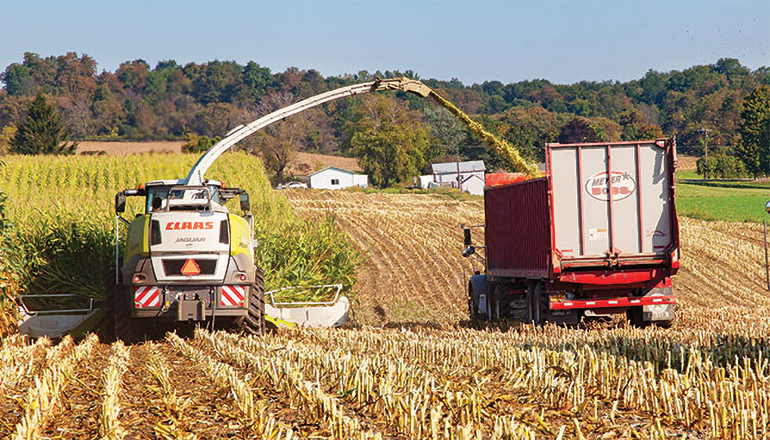An emergency feeding situation is shaping up for Missouri’s beef producers because of the drought. The University of Missouri Extension recently hosted University of Wisconsin agronomist Joe Lauer on the MU Extension Forage and Livestock Hour to discuss his research on corn silage as a forage.
Lauer talked about what makes good forage: high yield, energy (digestibility), intake potential (low fiber), and protein. Also, proper moisture at harvest for storage is key.
The ultimate test is animal performance. In dairy cattle, the MILK2006 index is the best predictor for performance (Schwab-Shaver equation), he said.
Is corn ready to become silage? Lauer said growers can determine the success of pollination by the shake test. Carefully unwrap the ear and shake it; silks on fertilized ovules will fall off. Another technique is to wait until 10 days after fertilization of the ovules. The developing ovules (kernels) will appear as watery blisters. If pollination is poor, harvest anytime. If fair, leave for silage harvest. If good, use normal management.
MU Extension agronomy specialist Jill Scheidt demonstrates the shake test in this YouTube video.
Lauer said bioengineered hybrids help in drought. “Bt-ECB is most important,” he said. “DroughtGard has little data but great potential.”
In drought, corn forage is still wetter than you think. Cut with a Haybine and dry before chopping and storing. Make sure there’s ideal moisture for the storage structure and the silage is well packed and sealed.
You can also use the grab test for harvest timing. Tightly squeeze a handful of finely cut plant material for 90 seconds. At 60% to 70% moisture, the ball expands slowly, with no dampness on the hand. At less than 60% moisture, the ball springs out when the hand is opened.
Nitrates are not typically a problem unless new growth occurs at the base of the plant, Lauer said. Nitrate will form a gas that will dissipate in about 28 days.
But if there’s any doubt, test, said MU Extension agronomy specialist Jill Scheidt.
“Quick testing is vital to helping animals survive,” she said. “Most MU Extension offices offer diphenylamine-sulfuric acid spot tests.” She suggests calling the office before bringing in a sample.
Scheidt demonstrates the nitrate test in this YouTube video.
“There’s going to be huge differences across the state on how to price corn silage,” said MU Extension agricultural economist Joe Horner.
Horner said there are extreme differences in quality and quantity. In northwestern Missouri, there’s 200-bushel corn silage, but much of southwestern Missouri is in D-2 drought, which greatly minimizes quality and quantity.
Horner points producers to MU’s newly updated pricing corn silage tool at this link, which helps buyers and sellers negotiate prices based on local conditions.
For livestock feeders, he said, the most they are willing to pay is the price per ton of equally nutritious alternative feed. For crop farmers, the least they are willing to accept is the price per acre of the next best alternative.
“Statewide, we haven’t seen the tightness (for forages) we saw in the 2012 drought,” Horner said. “Hay prices were steady as of last week. There’s a lot of hay being put up, especially in northern Missouri, and they’ve still got prices of $60 to $140 a ton.
“It may be panic time for a lot of producers in southwest Missouri right now. They may be culling herds and worried about water and forage supplies, but this is not a 2012 situation because you don’t have to go that far before you get into good crops.”
Find hay market listings at this link..


